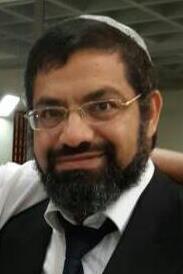The Honor of Torah and the Priestly Garments
הרב חיים יעקב גולדוויכט
מרן ראש הישיבה זצ"ל
A. The Honor of Torah
It says in the Midrash regarding the sanctification of Aharon and his sons (Shemot Rabbah 38:5):
"This is the matter that you shall do for them [to sanctify them to minister for Me.] (Shemot 29:1) This is what is written: "The wise shall inherit honor." (Mishlei 3:25) Honor is nothing other than Torah. Here is proof: What does it say in the beginning of Divrei Hayamim: "Adam, Shet, and Enosh." All the others are the same. You do not find "honor" regarding any one of them until you reach Yabetz, as it says, "Yabetz was more honorable than his brothers." (Divrei Hayamim I 4:9) Why does it mention "honor" regarding him? Because he toiled in Torah. Thus, "The wise shall inherit honor."
You find the same regarding Aharon. What does it say about him? "The Teaching of truth was in his mouth." (Malachi 2:6) What did G-d say to Moshe? "You shall make garments of sanctity for Aharon your brother, for honor and splendor." (Shemot 28:2) All this is in the merit of the Torah in which he toiled. Thus, "The wise shall inherit honor."
Our sages blend here two concepts of honor with one another: the "honor" written regarding the priestly garments – "You shall make garments of sanctity for Aharon your brother, for honor and splendor" – with the "honor of Torah" that Yabetz achieved, honor which arises from the toil of the oral Torah. We would like to understand the common root of this wonderful blend.
B. Garments of Honor
"Honor" is the spiritual element, which mandates both Shabbat clothes and the priestly garments, and is itself embedded in the "cloaks of skin" of Adam. (These ideas are already discussed elsewhere in the Asufat Ma'arachot.) In our parsha, Chazal further comment that the source of this spiritual light is hidden in the toil of the Oral Torah. We would like to clarify: What is a garment of honor, and what function does it serve? To understand this, we must first discuss on a more basic level: What is the "honor" that the Torah talks of?
C. "I Created it for My honor"
Let us preface that the "honor" that the Torah talks of is the external expression of the internal quality. We would like to explain this point, which is one of the deepest principles; one that Jewish thought deals with at length. We will explain here the little that can be explained of it.
Everyone is aware of Chazal's teaching that the purpose of the creation of a material world is to give honor to the Creator King:
Everything that G-d created in His world was created only for His honor, as it says: "Everyone who is called by My Name I have created for My glory, I have fashioned, even perfected." (Avot 6:11)
The "honor" that is incumbent upon us – the creatures of the lowly physical world – to grant the Creator, is to reveal His existence from within the concealment. To uncover the Divine light, which is hidden-captive within the darkness of the material. This is the honor that the angels, who lack free will, cannot grant the Creator, since they dwell in a world of revelation. Only man, who has free choice and dwells in the depths of a dark and physical world, he alone is capable of uncovering this. G-d created His world specifically for that slight honor that is accorded Him by the beings of the lower world, since even before the Creation His honor filled all in a revealed manner. What was added through the creation of the world was the concealment of the Divine. Thus, the world, with all its levels of concealment was created in order to allow the uncovering of the light from within the darkness.
The physical reality that is visibly tangible has no right of independent existence, since there is no possibility of existence and life for purely physical matter. Rather, G-d's command, through which it was created in the six days of creation are planted within it, and say to it every moment: "Be!" If this vital Divine element were removed from it, the entire Universe would turn to nothing immediately. This is what Chazal instituted in the daily Morning Prayer, "Who renews every day the works of Creation."
The AR"I z"l explained in this way what it says, "You give them all life." (Nechemiah 9:6) "You" – this is the Divine spark that is embedded in the embers of the physical existence; "give them all life" – the Divine command which is hidden in the thickness of the physical material is what gives life to the physical wrapping, and provides it with the ability to exist. However this spiritual-soul content is cloaked with a physical "garment," which enwraps and hides the spiritual quality, just as a person's body is nothing other than clothing and a "garment" for his true "self" – the Divine soul from above, which dwells within him.
However, the physical world, as it is perceived with physical senses is misleading, and tricks man to relate to it as "something" of self-existence. However, the truth is that it serves only as a covering that G-d created and wrapped with it the spark of the Divine honor, which dwells, as mentioned, in the thickness of the material world.
D. The Service of the "Garments"
We can formulate, as the Kabalists did, that the physical covering is nothing other than a kind of garment which encases and covers the Divine reality that is hidden and embedded within it. This "garment," when it misleads man and hides from him the spiritual reality, is defined as a covering that hides the face – the hidden Holy Face.
Man's role in this world is to remove this covering and to recognize the reality of the Creator, from within the material itself. If a person succeeds, then the physical universe itself points, shows, and proves to him the Divine reality inherent in its depths. And when a person succeeds in doing this, he uses the material covering itself and turns it into a tool and expression of G-d's honor. Through this, the physical cloak turns into a "garment of honor," through serving as a testimony to the existence of its Creator, through expressing the Divine honor that is inherent in it.
This is the "honor" about which we established earlier, that "honor" is the external expression of compressed spiritual qualities.
We have now arrived at a concise definition of the notion of "garments" that we are dealing with. The "service of garments" is the great effort and toil of man in order to peel away the layer of physical coating, so that he perceives and senses the light embedded in its inner depths.
E. The Priestly Garments
We now can now approach an understanding of the Temple service. The service of the Temple is intended to elevate and refine physical activity through offering it to G-d. All the actions of the offering: the burning on the Altar, the wine libations and meal offering, the sprinkling of the blood, etc. – are branches emanating from the basic function of the Temple service, to reveal the spiritual point that maintains the world of action.
Indeed, the uncovering of the spiritual side of the physical existence was great in the Temple. The most dramatic expression of the subjugation of Nature to spiritual existence was, indeed, in the Temple, through the ten miracles that occurred there. This wondrous conduct of the daily routine of the Temple clearly shows the inner goal of the Temple service: to subjugate Nature, with all its limitations, to a Divine destiny.
Thus, the Temple service is one of the primary ways through which the physical coating is peeled away, and the Divine spark – the "honor" – that is encased within it is revealed. Hence, it plays a central role in the service of the "garments."
We can now continue further and include in the Royal "garments" also the essence of the priestly garments. The kohen himself, who is involved in this service of "garments," also requires clothes that properly reflect this service. These "garments" are amongst the "tools" which he utilizes in order to carry out this role. Thus, the priestly garments define the essence of the entire Temple service. "When they have their clothes on – they have the priestly status; their clothes are not on them – they don't have the priestly status." (Zevachim 17b)
The priestly garments typify the nature of the priestly service: to sanctify the garment, which is the expresses the external nature, and to endow it with the sanctity of the inner service. This is the seal of "honor" that the Torah grants the priestly garments, since honor is the external expression of the hidden quality, as explained above.
"You shall make clothes of sanctity for your brother Aharon, for honor and splendor."
F. The Honor of Torah
These garments of honor are the thread that ties the priestly clothes to the honor of Torah. Chazal teach: "G-d would look in the Torah and create the world." (Bereishit Rabbah 1:2) Here our Sages taught us that before G-d designed the format of the world, He set up goals, and according to them He drafted a plan. This is like an architect, who designs the form of his building with pen and paper before beginning to build. The words of Torah – they are the architectural blueprint, according to which the world, with its array, was designed. Therefore, before each act of creation, "He looked in the Torah," and following it he formed His creatures.
Thus, the words of Torah are the expression of the initial plan that led to and defined the final creation. This "thought," which found expression in the Torah, expresses the "honor" that is embedded in the Creation. However, the words of Torah themselves are still covered with a heavy cloak of unclarity and concealment. We do not perceive the "honor" that is woven in its light without the deep toil of the oral Torah. This idea, the light that shines forth from the oral Torah, is found in another passage:
The light that G-d created on the first day, man could see with from one end of the world to the other. When G-d saw the generation of the flood and of the dispersal, and saw that their actions were spoiled, He went and hid it from them. (Chagiga 12a)
Our Sages teach us that the hidden light that served during the six days of Creation was an intangible light, a spiritual light, a luminescence that penetrated to the depths of the physical, which lights up and reveals its nature and goals. It was a light that "man could see with from one end of the world to the other." However, people were not worthy of using it, and therefore it was hidden away. Elsewhere, our Sages identify where it was hidden:
Where did He hide it? In the oral Torah. (Sefer Habahir)
This Midrash enriches us with a new and deep appreciation of the involvement in Torah. Learning the oral Torah is built through a process of revealing. On its surface, the Torah is "entirely dark." (Midrash Tanchuma Noach #3) The sugya seems unclear and "dark," without resolution. The role of a person who toils in Torah is like the role of the priest who serves in the Temple: to uncover the inner light that is hidden in the darkness, and thereby to light the external darkness. Thus, toil in the oral Torah is the primary means of revealing the light that is hidden in the Torah, which thereby lights up the goal of the entire Creation. Through this, "man sees from one end of the world to the other."
The world, without the light of Torah is very dark and sealed. Its thick, physical outer layer covers and darkens, and "hides the Face." The holy Torah reveals the initial intention, the goals, the inherent sanctity; it reveals the blocked light. This is what we say: "Honor is nothing other than torah," since, as we said, "honor" is the external expression of the hidden quality.
However, the radiance of the light of Torah itself requires an act of "raising up," an act of striking stones so that the flame arises. This is, in fact, the goal of involvement in the toil of the oral Torah. This deep and difficult toil is that act of striking stones and igniting the flame. This is also the external form and way of expression of the oral Torah: great waves of thought which clash powerfully one against another; raging movement of thinking from the extremes of various logic – until achieving the spark of understanding that lights up the darkness of the sugya with a shining light.
We now understand with a clear light the connection between "Honor is nothing other than Torah" and the holy garments that Aharon merited, "for honor and splendor." The two notions of "honor" serve as a garment for the same spiritual process. They are the two primary ways that break through the covering of the material and reveal the fundamental purpose of Creation. There is certainly no way that a person can stride forward in this service other that through the toil of clarifying the sugya. We now understand very well what we learn in the end of the opening Midrash:
You find the same regarding Aharon. What does it say about him? "The teaching of truth was in his mouth." (Malachi 2:6) What did G-d say to Moshe? "You shall make garments of sanctity for Aharon your brother, for honor and splendor." (Shemot 28:2) All this is in the merit of the Torah in which he toiled.
G. Yabetz
We can now appreciate more the special honor accorded Yabetz, an honor that none of the generations before him achieved – "You do not find honor regarding any one of them, until Yabetz is reached." This is because Yabetz, as Chazal reveal elsewhere, is Otniel b. Knaz. Otniel's toil in Torah stands at the very root of revealing the light of Torah that is missing in the darkness:
It is taught, 1700 kal vachomers, gezeirah shavas, and dikdukei sofrim were forgotten during the mourning period of Moshe, until Otniel b. Knaz got up and returned them through his pilpul. (Temurah 16a)
This special manner of learning Torah, which was unknown during the days of light and clarity of Moshe, is what gave Otniel the level of "honor" which stands at the root of revealing the hidden treasures.
This is also why R. Yochanan, the father of the oral Torah in his generation – called his clothes, "My honor." (Shabbat 103a)
קוד השיעור: 3697
(Adapted from Asufat Ma'arachot) English by Rav Meir Orlian
לשליחת שאלה או הארה בנוגע לשיעור:
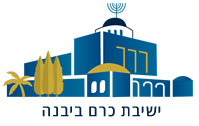
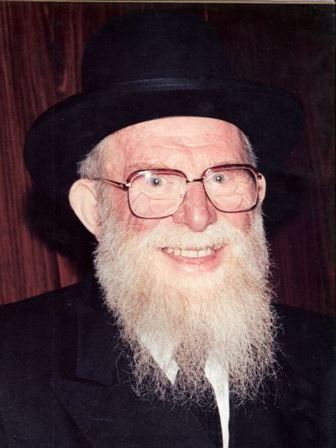
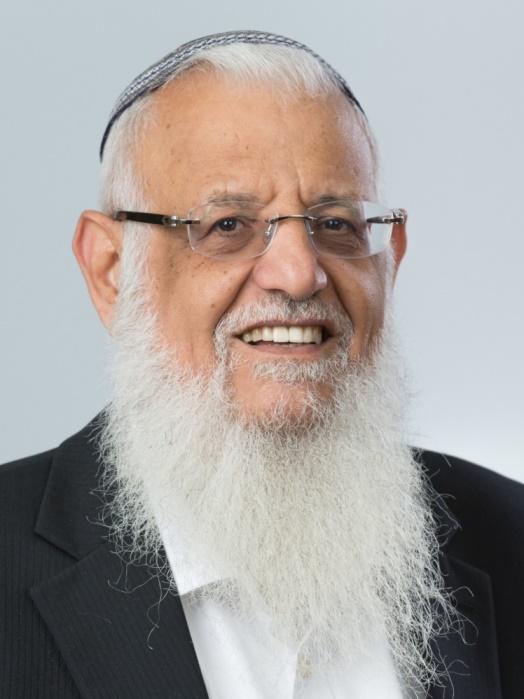
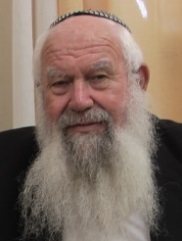
.jpg)

